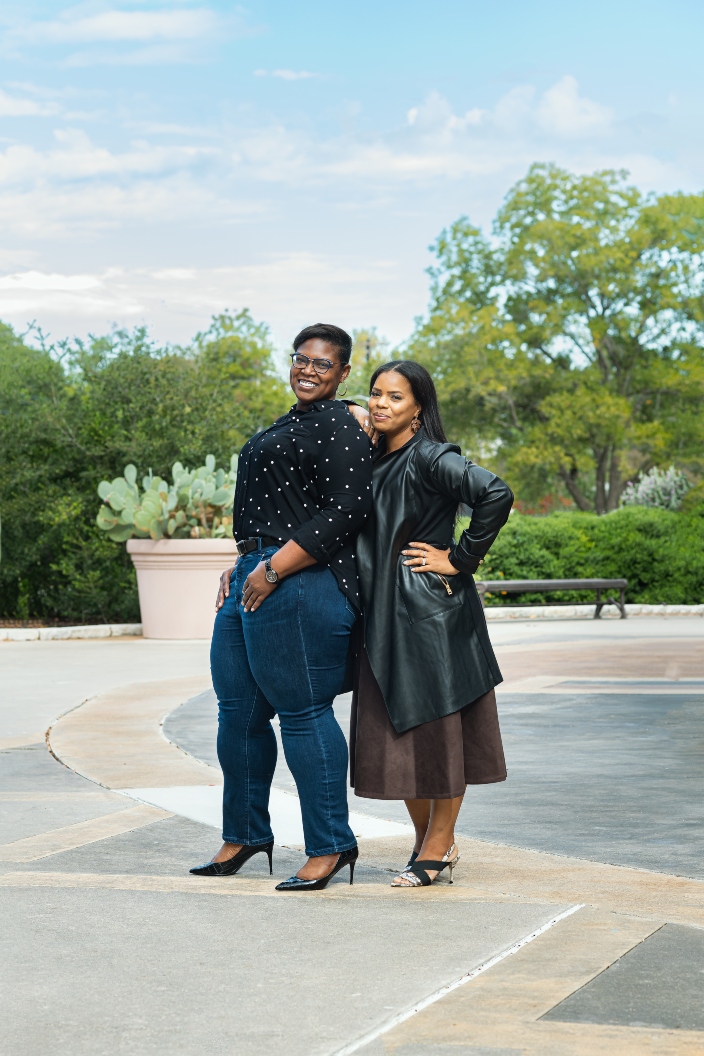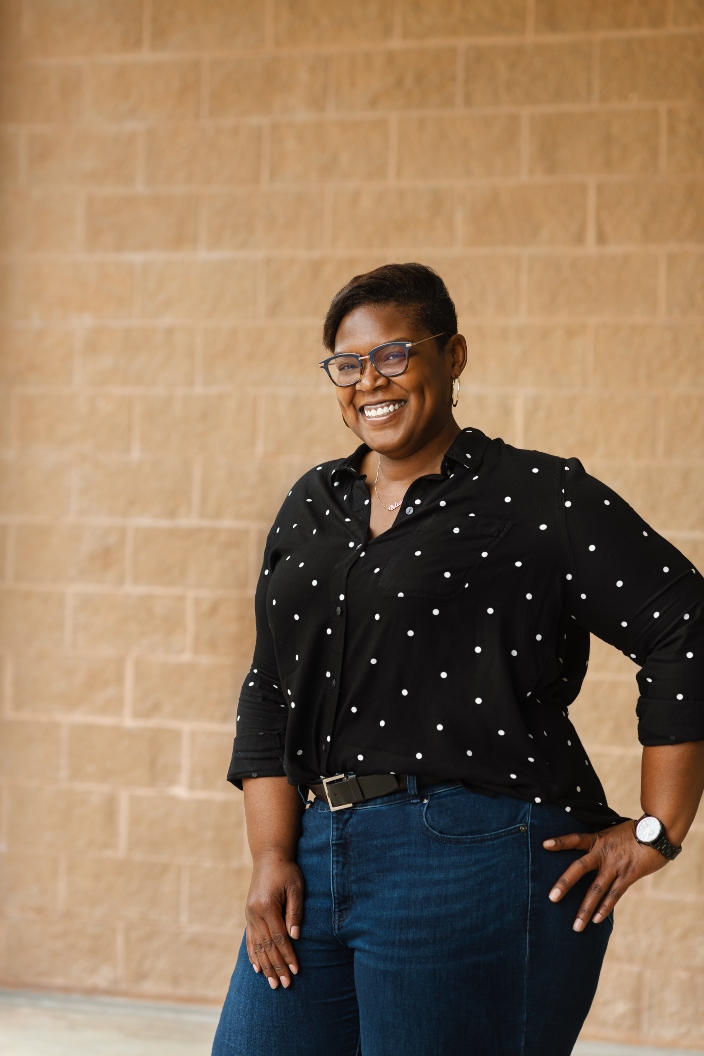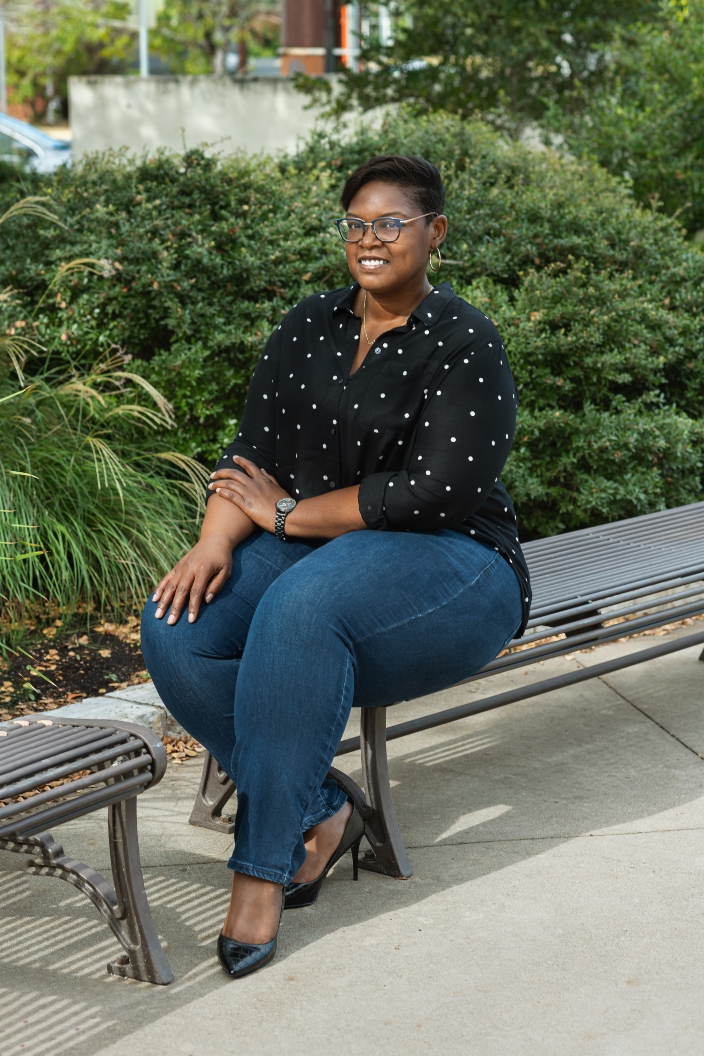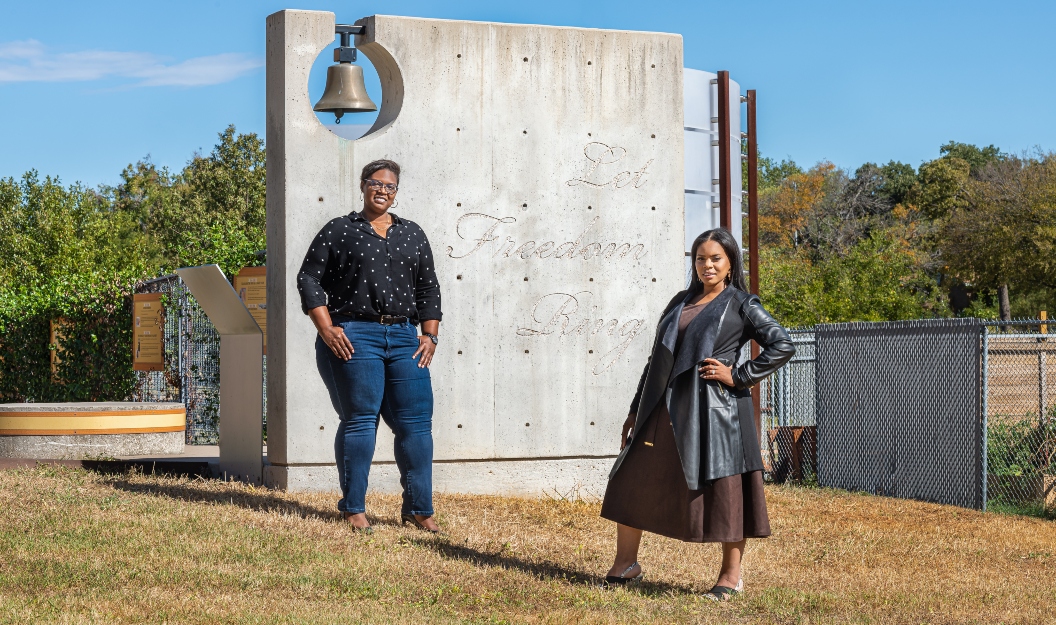The Black Fund lifts financial burden for Black-led businesses.


By Chandler Maloney, Photos by Joi Conti. Shot on location at the George Washington Carver Museum and Cultural Center
After two years in the making, The Black Fund launched in August with plans to uplift Black-led businesses by supplying them with the financial resources they need to be successful. The group proudly met their fundraising goal of $1 million before setting their plan in motion. The fund caters to organizations within six Central Texas counties: Travis, Williams, Bastrop, Hays, Caldwell and Burnet. The three women who founded the fund have personally fought the uphill battles that Black-led organizations face and hope this project will prevent the ongoing racial disparity that stands in the way of the Black community fulfilling its true potential.
The founders all shared a common dream to create a sustainable project that would help the Black population prosper. Jameila “Meme” Styles, Kendra Garrett and Dr. Colette Pierce Burnette came together to see their vision come to life. “I believe all of us had a desire to see a Black Fund,” says Styles. “We weren’t really sure where it needed to live. But we had a desire to see it meet the needs of our community in a more intentional way.”
When the women first met, they were instantly inspired by each other’s ideas to create the fund. “It was like a cult. It was like a collision of the same idea. We just knew it was time, and it was absolutely long overdue.”
Working As a Community

A jarring survey that exposed the lack of funding Black-led businesses receive, not only in Texas but nationally, was the catalyst that inspired the fund’s creation. “The idea for the fund came from a simple question, ‘Why is there no Black fund?’” Garrett says. “There are other equity funds that exist, and there needs to be a fund for Black people. We were pivotal in building Austin. And we continue to do so much for our community and the community at large.”
There are several nonprofits that are working to uncover and remedy the lack of support that Black communities receive. One such organization is MEASURE, an Austin-based nonprofit founded by Styles to provide data-based solutions to address inequity in Black and Brown communities through groundbreaking research and advocacy. The nonprofit partnered with Black Leaders Collective, a coalition of Black community members founded by Black Fund campaign co-chair and steering committee member Terry P. Mitchell, to bring Black leaders together to discuss and execute strategies to uplift Austin’s Black population. The organizations collaborated to conduct a survey evaluating Black-led nonprofit funding in Austin. More than half of survey respondents did not believe their company was capable of fundraising without outside help. (Nationwide, Black-led businesses are underfunded by $2 billion.)
The group collectively determined that Black-led businesses needed to be the target of funding; they are the glue holding their communities together. These companies are integral to their communities’ longevity and have the power to foster significant change. “Black-led organizations are in the best position to solve complex social issues that have to do with their community,” says Styles. “We support other organizations that don’t have the culture, language or resources. So it’s important for us to pour into our changemakers.”
Pillars of Success

The fund’s team considers several factors before investing in a Black-led business. First, the organization must complete an application describing why they should be a recipient of the money. When the group receives the application, members evaluate the business based on core categories the fund creators believe will produce the most significant effect: education, power building, organizing and advocacy, health and wellness, and wealth building. “These areas were the ones that we could advance to move the needle on outcomes for black people in Austin,” Styles reveals.
An outstanding factor they also consider a distinct pillar is the extent to which a Black-led organization serves its community. The fund is structured to be more purposeful than just a one-time financial transaction. It is important that the company not only strives to advance its business, but the community at large. “Outside of meeting our basic needs, we need to be working toward systems change so that we do our ancestors and future generations right by continuing to move the ball forward toward that equitable, just society that we want to live in,” says Garrett.
The founders strategically structured the eligibility requirements so that the fund would produce a broad reach across several sectors. Rather than having one industry develop faster than others, the prosperity of a variety of Black-led organizations will help the community become more well rounded. “We have impact areas that, while [they]were narrowed down to four, will be used with an intersectional lens,” Garrett says. “It is physical, mental and spiritual health; whole-body care is what we are interested in funding and now have the ability to do so.”
Asking Hard Questions
Garrett, Styles and Burnette addressed heavy topics and asked complex questions when developing the fund. The most difficult issue to confront was the fact that nothing similar existed to equip the Black community with tools to improve their quality of life. “We had to contend with the fact that it was racism that led us to even have to create such a fund, because Black-led organizations get a minimal fraction of philanthropic funding,” Styles says. “We saw the sheer lack of support and the reality that people who look like me are funding their organizations out of their own pockets. The biggest challenge was having to confront the lack of the funding and why we are not as sustained as everyone else.”
The team faced additional hurdles when deciding how the Black community could be most effectively empowered. The first obstacle presented itself in the form of fundraising. While there are numerous areas of improvement and several companies that need financial help, it was also difficult defining which businesses would qualify for investment at the expense of others. “There is a lot of passion and validity to every issue, but we can’t do it all,” Garrett admits. “There are brick walls and hurdles that have to be navigated. But we have raised and will continue to raise money that will allow us to support amazing work in our community.”
Another complex issue that the group faced was the role white-led businesses should play within the overall project. The founders feared that the involvement of the businesses might overshadow the fund’s true intention to promote the Black community. However, the team trusts that white-led businesses will “step up and step back” to see this fund do its work. “There isn’t one answer, because sometimes it is contextual,” Garrett says. “Racism and classism keep our institutions standing tall and strong. But every time an opportunity comes along to make a new friend, push forward a new initiative, have uncomfortable conversations, read a new book, so on and so forth, that challenges us to think about our biases in how we show up in everyday life.”
More Than Money
The group allied with Austin Community Foundation to assist with outreach and fundraising efforts. “We went to Austin Community Foundation as a partner because they do have a really great track record at sustainability,” Styles says. The fund came into existence through the foundation’s donations, fund creators, corporate businesses and individual contributions. Not only created for the people, but by the people. With the help of multiple groups, The Black Fund intends on making its first investment within the next few months.
The fund is significant beyond its purpose and its creation. It was formed by people who know the solutions because they have personally witnessed the systemic racism in our society. The women who initiated the fund understand the battles that the Black community faces and feel that they are in a place of authority to tear down those bridges that have restricted Black people. “I’m most proud of the power that Black women have shone through the building and trajectory of this fund,” Styles says. “The lived experience that informed the creation of this fund is our experience.”


The fund will not only sustain businesses financially; it will also promote interaction among members of the community. Fostering connections among Black individuals will further the discussion around existing systemic racism and strategies that could be implemented to improve the well-being of future generations. “I think The Black Fund really seeks to build not just the capacity for these organizations, but also a village where you can come to be sustained financially and also supported through relationship building,” Styles says. “Black-led businesses thrive because they’ll have funding, and they’ll thrive because they have one another.”
Work that Changes the World
With the diversity of its supporters—donors, business leaders and Black community members—The Black Fund will achieve success. The intention is that the fund will meet the needs of this generation as well as the next. “As community members cycle in and out of this work on a periodic basis, with each person adding their individual, special touch to the evolution of this fund, the fund will become sustainable,” Garrett says. “It will adapt to the needs of the moment and support work that changes the world, for the better, for everyone.”
The fund’s longevity and impact rely on continuous donations that will support the restructuring of our society’s social hierarchy. While the hardest part of creating it has been completed, now is the time for widespread involvement. “We want continued investment,” Styles says. “There’s no reason why a philanthropic organization cannot support Black-led social change work now. Now that this mechanism is in place, there’s no longer an excuse. We see this to be a gap filler, but we need the support of everyone in order to do so.”
Individual investment is only an immediate benefit compared to the long-term fulfillment that Black communities will achieve through this fund. “Funding Black-led organizations will have a ripple effect far greater than any of us will realize,” Garrett says. “Black-led organizations and grassroots community groups are doing the work and are the movement in a tried-and-true fashion. But also in ways that are disruptive, innovative and creative. I see this fund as being one part of the invisible fabric for the Black community.”
A Black Fund for the Black Community

At the end of the day, Garrett, Styles and Burnette hope The Black Fund will create a more equitable environment for the Black community. By both elevating their access to resources and uplifting their spirits, the fund will strengthen the Black community by offering financial capital, a social network and the hope that a brighter, more sustainable future is near. “We aren’t just giving money to maintain the current social order and patting ourselves on the back with glee that we did something nice,” Garrett says. “I want to do dream fulfillment and systems change with these dollars.”


